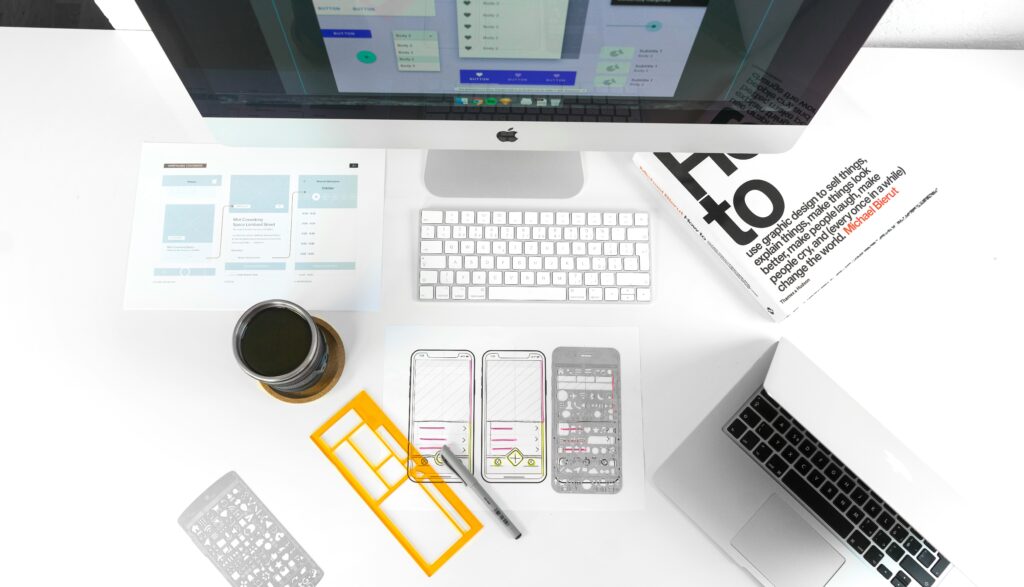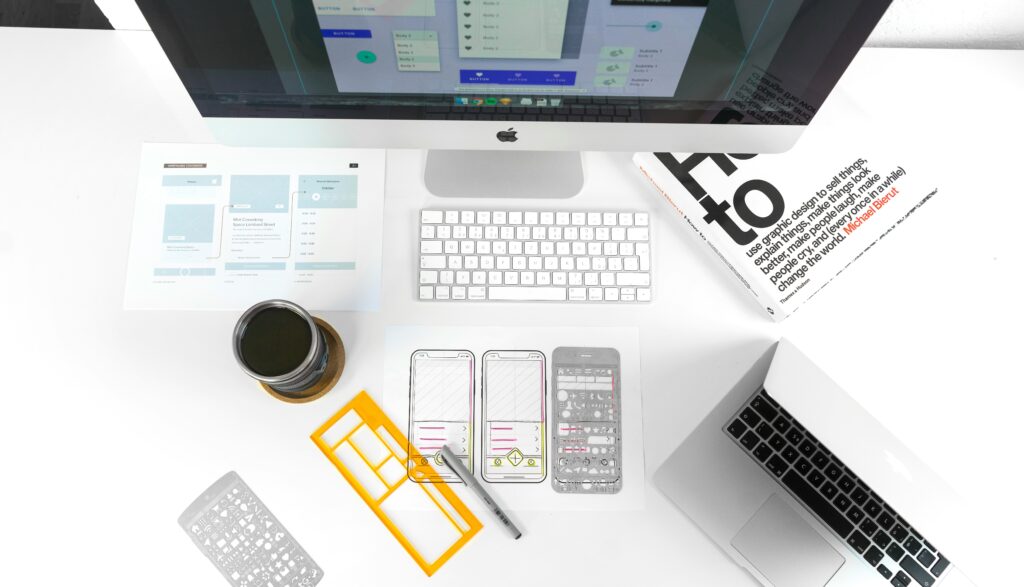The digital landscape thrives on the interplay of two forces that shape a user’s experience: UX design and UI design. Often used interchangeably, these terms represent distinct but complementary roles in crafting exceptional digital products. Let’s peel back the layers of UI and UX design, explore the responsibilities of each designer type, and equip you to chart your design path.

A Beautiful Partnership: UI & UX Working Together
UI and UX design, though seemingly like two sides of the same coin, have key differences. UI design focuses on the visual language of a product – its presentation, aesthetics, and interactive elements. Think of it as meticulously arranging a physical store layout to influence how products are displayed and ultimately, how customers navigate the space.
UX design, on the other hand, takes a broader view. It delves beyond the surface to understand how users interact with a product throughout their entire journey. This includes factors like ease of use, finding information quickly, and the user’s emotional response during and after interaction.
For a deeper dive into UX design principles, check out Nielsen Norman Group‘s comprehensive guide.
The Designer’s Toolbox
UI Designers: The Visual Architects
UI designers are visual architects who craft user-friendly and aesthetically pleasing interfaces that align with the brand’s identity. They curate color palettes, fonts, and images with meticulous care, while designing interactive elements that function seamlessly across various devices.
UX Designers: Champions of the User Experience
UX designers champion the user’s perspective. Their work involves conducting user research, developing user personas, mapping user flows, and creating wireframes and prototypes. These prototypes are then rigorously tested for usability, with the experience continuously refined based on real user feedback.
In smaller companies, you might encounter “UI/UX designers” who possess a broad skillset encompassing both disciplines. However, as organizations scale and projects become more intricate, the roles of UI and UX designers often become more specialized.

Choosing Your Design Path: UI or UX?
The choice between UI and UX design hinges on your personal interests and strengths. If you have a keen eye for visual aesthetics and enjoy crafting beautiful interfaces, UI design could be your calling. Conversely, if you’re captivated by user behavior, relish research, and strive to create user-centered experiences, UX design might be a better match for your skills and passions.
By understanding the distinct roles of UI and UX design, you’re equipped to navigate your design journey!
Related Posts:
Difference Between UI and UX Design
